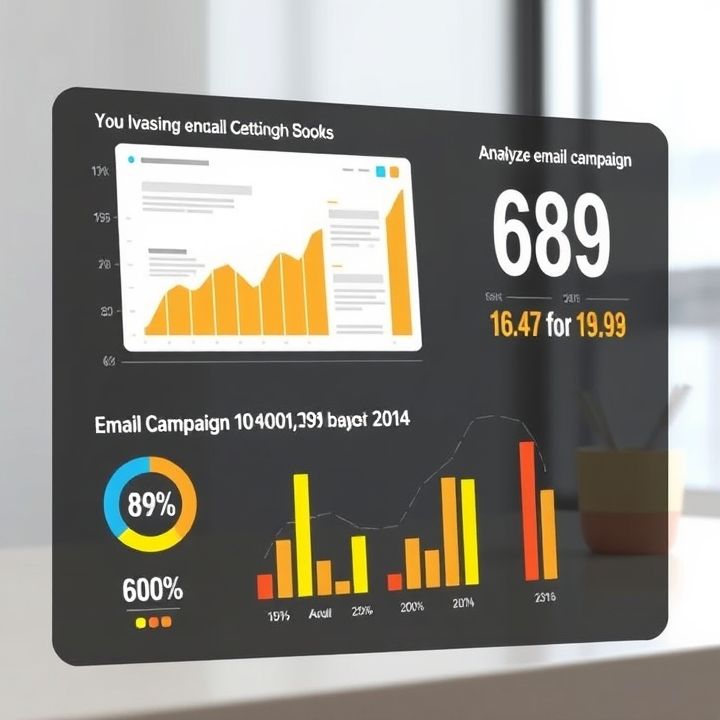Table of Contents
- Introduction
- Segmentation and Targeting: Identifying lapsed customers through data analysis
- Crafting Personalized Messages: Tailoring content to individual preferences and past behaviors
- Incentives and Offers: Creating compelling reasons for customers to return
- Timing and Frequency: Determining the optimal schedule for sending reactivation emails
- Utilizing A/B Testing: Experimenting with different approaches to identify effective techniques
- Conclusion
- Frequently Asked Questions
Introduction
In today’s digital age, triumphing over fierce competition requires more than just stellar products and outstanding services; it demands innovative strategies to revive and invigorate your sales pipeline. Imagine rekindling relationships with customers who have drifted away, breathing new life into dormant email lists, and transforming them into loyal patrons once again. This may sound like a tall order, but with the right email strategies, it is entirely achievable.
Picture the seamless integration of compelling content, irresistible subject lines, and a touch of personalization to reignite interest and foster engagement. By harnessing these tactics, your business can breathe new vitality into seemingly inactive customer lists, converting them into a hotbed of activity and opportunity.
| Email Strategy | Benefits |
|---|---|
| Personalization | Increases engagement |
| Re-engagement Campaigns | Revives inactive customers |
| Compelling Content | Boosts open rates |
As you embark on this journey to rediscover the hidden potential in your sales arsenal, Revive Your Sales! Uncover the Secret Email Strategies to Win Back Lapsed Customers Now! will guide you through the essential steps and creative processes to transform your email marketing game. Ready to unlock the secrets that will revolutionize your sales approach? Let’s dive in and explore how to make every email count!
Segmentation and Targeting: Identifying lapsed customers through data analysis
Segmentation and targeting are critical steps in reactivating lapsed customers through email campaigns. By employing data analysis, businesses can identify those customers who have fallen off the radar. This begins with collecting and analyzing historical purchasing data, customer engagement metrics, and behavioral patterns. By segmenting customers based on criteria such as their last purchase date, average spending, or interaction frequency, businesses can tailor their messaging to resonate more effectively.
For example, identifying customers who haven’t made a purchase in six months versus those who’ve been inactive for a year allows marketers to design targeted campaigns that address specific reasons they might have stopped engaging. Perhaps the younger cohort is drawn to incentives like discounts, while older groups might appreciate a restatement of value or new product updates. Data analysis also helps in understanding geographical differences or seasonal purchase patterns, enabling even finer segmentation.
Harnessing this data effectively ensures that reactivation emails are not only reaching the right audience but also offering them actionable incentives that speak to their unique preferences and past behaviors, thus enhancing the likelihood of reigniting their interest and driving them back to the brand.
Crafting Personalized Messages: Tailoring content to individual preferences and past behaviors
When crafting personalized messages for email campaigns aimed at reactivating lapsed customers, tailoring content to individual preferences and past behaviors is crucial for success. Creating a customized experience begins by analyzing customer data, which can include past purchase history, browsing activities, and previous interactions with emails. This data provides valuable insights into what products or services resonate with each customer, enabling marketers to create targeted content that directly addresses their interests.
Personalization goes beyond just inserting a customer’s name into an email. It involves building a narrative that aligns with their specific needs and desires. For instance, recommending products similar to previous purchases or reminding them of items left in their shopping cart can reignite interest. Offering exclusive discounts or personalized incentives can further persuade them to re-engage.
Moreover, utilizing segmentation allows marketers to group customers with similar behaviors and preferences, making it easier to deliver relevant content at scale. Incorporating dynamic content that adapts based on real-time data can also enhance personalization efforts. This approach not only increases the likelihood of recapturing lapsed customers but also strengthens their emotional connection to the brand, fostering long-term loyalty and engagement.
Incentives and Offers: Creating compelling reasons for customers to return
Creating compelling incentives and offers is a powerful strategy for reactivating lapsed customers through email campaigns. These incentives serve as a motivation for customers to revisit and engage with a business. Offering exclusive discounts or special promotions can create a sense of urgency and exclusivity. For instance, providing a limited-time discount tailored to products or services the customer previously showed interest in can reignite their purchasing intent. Personalized offers, such as birthday discounts or anniversary specials, show customers that the brand values their relationship and encourages them to return.
Loyalty programs can also be a key driver in re-engaging dormant customers. By offering rewards for coming back or even bonus points for limited-time purchases, businesses can entice customers to resume interactions. Flash sales and bundled offers can further enhance this strategy by offering time-sensitive deals that prompt immediate action.
In summary, designing personalized and time-sensitive incentives not only encourages lapsed customers to return but also reinforces brand loyalty and engagement. In this digital age, where email communication plays a vital role, crafting enticing offers could be the catalyst that revives customer interest and drives sales.
Timing and Frequency: Determining the optimal schedule for sending reactivation emails
In the realm of email marketing, timing and frequency are pivotal when it comes to reactivating lapsed customers. The optimal schedule for sending reactivation emails can significantly influence their effectiveness. First, it’s crucial to analyze customer behavior patterns. By examining past engagement metrics, businesses can determine the times when their audience is most likely to open and interact with emails. For instance, sending emails at the start of the week or during lunch hours might yield better results depending on your audience’s habits.
Frequency is another aspect to consider. Bombarding customers with emails can lead to fatigue, further distancing them from your brand. A balanced approach is essential. Begin with a gentle nudge, possibly once a month, and then adjust based on engagement rates. A/B testing different frequencies can provide insights into which cadence works best. Moreover, incorporating time-limited offers or exclusive deals within these emails can create urgency, prompting quicker responses.
Lastly, it’s essential to continuously monitor and refine your strategy. What works today may not work tomorrow, so staying adaptable ensures that your reactivation campaigns remain effective and relevant.
Utilizing A/B Testing: Experimenting with different approaches to identify effective techniques
Utilizing A/B testing is a strategic approach to reactivating lapsed customers through email campaigns. By experimenting with different variations of email elements, marketers can identify the techniques that yield the best results. A/B testing involves creating two versions of the same email, with one differing element, such as the subject line, call-to-action, or layout. By sending these variations to a segmented portion of the target audience, it becomes possible to measure which version performs better based on specific metrics like open rates, click-through rates, or conversion rates.
This process of experimentation helps businesses tailor their messaging and offers to match the preferences and behaviors of their lapsed customers. For instance, a subject line that emphasizes urgency may prompt action from some segments, while a more personalized approach may work better for others. Continuously analyzing the collected data allows companies to refine their strategies, ensuring that the most effective techniques are eventually applied to the broader audience.
Overall, A/B testing not only enhances the effectiveness of email reactivation campaigns but also offers valuable insights into customer preferences, helping businesses build long-term relationships with their audience.
Conclusion
In conclusion, revitalizing your sales by re-engaging lapsed customers through email strategies is a powerful and cost-effective approach in today’s competitive market. By leveraging data analysis for precise segmentation and employing personalized messaging, businesses can significantly enhance the relevance and impact of their email campaigns. Offering enticing incentives and well-timed, frequency-sensitive emails can create a compelling urge for customers to return. Furthermore, the innovative application of A/B testing allows marketers to fine-tune their methods, ensuring that the strategies employed resonate deeply with their audience.
This holistic approach not only boosts sales but also strengthens customer relationships, fostering loyalty and long-term engagement. Embracing these techniques and continuously adapting strategies based on performance metrics can transform your reactivation efforts into a pivotal component of your overall marketing strategy. Ultimately, the key to winning back lapsed customers lies in understanding their behaviors, preferences, and timing—elements that, when mastered, position your brand at the forefront of customer reactivation success.

